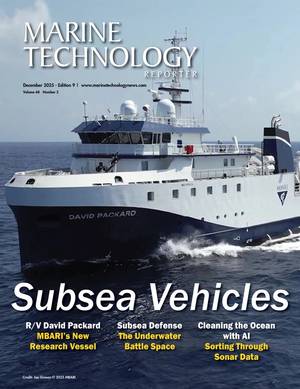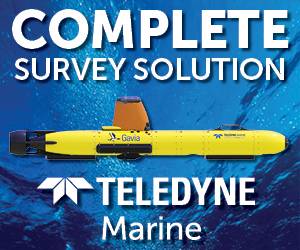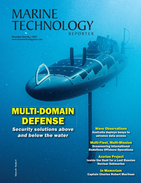Unmanned Underwater Vehicles
Unmanned underwater vehicles or UUVs are those machines that can operate underwater without a human on board. There are two different types of UUVs, those that need to be controlled by a human on board of a vessel, through various means, including a remote control, are known as remotely operated underwater vehicles or ROVs, while those that can function without direct human input are called autonomous underwater vehicles or AUVs.
Even though the technologies utilized by these machines have not yet reached maturity and many of the unmanned underwater vehicles are only in their first generation or in prototype stage, researchers as well as companies invest annually millions of dollars in their development. These submersibles are extremely cost-effective machines that can penetrate deep-sea areas where humans could not survive due to the unfavorable conditions, such as high pressure. They have been used for decades by the US Navy and off-shore oil and gas companies, for commercial, defense and research purposes.
What makes the mission of unmanned underwater vehicles rather challenging is the increase in the duration of the mission and the unknown environment, with changing parameters, such as pressure, temperature, luminosity and others. Researchers’ work towards increasing the reliability of these vehicles, so they can execute and successfully finalize missions with increased complexity and duration.
The size of UUVs varies with the model and their purpose. Those meant to neutralize mines are usually small and feature video and sonar equipment that enables the transmission of the data to a human operator. The challenge concerning this type of UUVs is creating batteries that can last for the duration required to complete the mission and assure maneuverability within certain space constraints of the UUV. Larger UUVs are used in commerce, for ocean floor mapping and other research operations. They feature more powerful batteries, of 22kWh of stored energy.
Applications of Unmanned Underwater Vehicles
Intelligence, reconnaissance, surveillance – are the primary functions UUVs have in military missions, especially those involving the navy. Even though the IRS operations involve air, land, and sea platforms, the evolution of unmanned underwater vehicles offer these operations a new perspective. The tasks requiring UUV assistance are focused on detecting the possible threats to human lives. One important challenge UUVs meet is the presence of fishing nets in deep-sea waters, which can cause damage or prevent the mission of the undersea robots.
The specialists at the Naval Undersea Warfare Center (NUSC) constantly seek solutions to offering the UUVs enough autonomy and intelligence as to avoid these possible obstacles and complete their missions successfully. The objective is difficult to reach especially in coastal waters where fishing activities are heavy and utilize a broad range of fishing utensils, such as different sizes and shapes of fishing nets, made of assorted materials, which can sometimes cover significant areas of the coastal ocean.
Expeditionary warfare – The man-portable UUVs for expeditionary warfare have been extensively researched lately at the request of the US Navy, especially those especially designed for shallow waters operations. This sort of UUV is able to identify and neutralize mines and handle operations that take place between the vessels and the shore lines.
Subsea Warfare - Mines countermeasures
Threats to the safety of population all over the globe multiply by the second and they come in unexpected moments and under different covers. One major threat comes from the sophisticated explosive mines hidden in both land and ocean regions and new technologies are being developed to meet the increasing risks. In fact, mines countermeasures was the very first purpose to which UUVs were invented in the first place. In 2003, UUVs equipped with warfare technology were involved in the Operation Iraqi Freedom, by the Naval Special Clearance Team (NSCT) One, together with Australian Navy and Royal Navy. The mission of these forces was to detect all mines within a specific area so that humanitarian aid can be introduced into the perimeter. The operations in Iraq were an additional proof that UUVs can successfully complete their mission even in difficult wartime circumstances, and also provide important information on environmental and oceanographic parameters.
The unmanned underwater vehicles for mines countermeasure need to be equipped with highly advanced sensor-fusion techniques, which are in fact operational systems incorporating a combination of sensor and computational technologies, in order to process data coming from a variety of sources. One single type of sophisticated subsea vehicle cannot possible assimilate all the technology, therefore the focus is on developing a broad range of such machines that can work synergistically.
When it comes to detecting land mines, the technology involves infrared systems and microwave imaging, as well as magnetic detection that classifies the mines. In the case of underwater mines, the technology is different and revolves around acoustic signals and sensors, and lasers that can locate the position of the threat. In 2007, the Boeing's Long-term Mine Reconnaissance System used by the US Navy as accessory to submarines, proved its efficiency.
Tactical oceanography – UUVs can conduct tactical oceanographic missions, without significantly increasing the operational costs. However, all the technology involved in this sort of missions is still under research and is not perfected yet.
Eco-friendly Subsea Vehicles
Unlike many versions of unmanned underwater vehicles, the eco-friendly subsea vessels do not use electric energy as a fuel. Solar-powered UUVs have been around only for a few years now and cannot go as deep as other similar machines, but can only travel as deep as 500 meters. They need to periodically go at the surface of the ocean in order to recharge. Even though they have few military applications, they are still very useful when it comes to monitoring lakes and rivers and taking probes, particles samples to check for security.
Other eco-friendly UUVs have been developed by the US Navy and use ocean currents as an energy source. They actually produce more energy than they need, as the ocean waves are an endless source of fuel. They are attached to Sounding Oceanographic Lagrangian Observer -- Thermal RECharging, or SOLO-TREC.












 December 2025
December 2025



